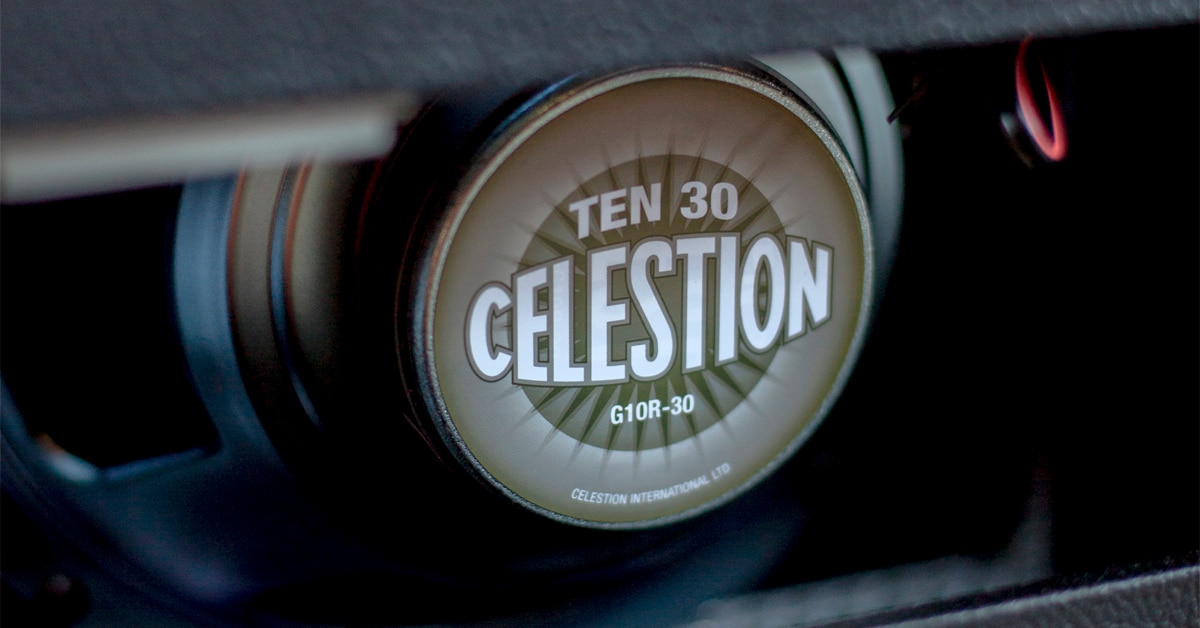There seems to be some confusion when it comes to how "loud" an amplifier can get. When it comes to "volume," many musicians only consider the amplifier's power or wattage rating, and in general, more watts does mean "louder." But while wattage is an important consideration, the efficiency of the speaker(s) that are connected to the amplifier are also an important factor in the loudness equation.
Decibels and Levels
So, what are decibels exactly? Decibels (abbreviated "dB") are a logarithmic unit of measurement that pertain to a ratio between two numbers. Okay, we can see eyes rolling and glazing over, so we'll simplify things, and attempt to keep the "math" to an absolute minimum. With a logarithmic scale, you can't just add numbers in the usual way—a doubled number isn't "twice as much," but rather, many times more. For example, 100dB is many times greater than 50dB, not just "twice as much." When it comes to "loudness," which is measured in Sound Pressure Level, (or SPL), a 10dB increase in level is roughly equivalent to a "doubling" of perceived loudness. In other words, if one amp is generating 90dB SPL and another amp is hitting 100dB SPL, the second amp will generally be perceived to sound about twice as "loud" to the typical listener.
Wattage, Power, and SPL
So how many watts does it take to get twice as loud? Let's imagine two amps—one amp rated at 10 watts, and a second amplifier rated at 20 watts. The 20-watt amp is double the power of the 10-watt amp, but doubling the power only translates to an increase of 3 dB SPL. Remember, in order to sound "twice as loud," you need an increase of 10dB, so while a 20W amplifier will sound noticeably louder than a 10W amp, it will not sound twice as loud. The same thing holds true at higher wattages—a 100W amp is not going to sound twice as loud as a 50W amp; assuming identical speakers, it will only be 3 dB louder, which is noticeable, but definitely not a doubling of perceived loudness.
Understanding Speaker Sensitivity Ratings
Speakers have specifications in terms of their sensitivity and efficiency— their ability to convert the incoming electrical energy into acoustical energy. Dynamic, moving coil speakers (the type found in most guitar and bass amps) are notoriously inefficient, and most of the incoming power is actually converted into heat, not sound. Normally, speaker sensitivity is measured in an anechoic chamber (non-reflective, soundproof room) and expressed something like this: 90 dB @ 1W/1m.
Translated into English, that means "90 decibels (SPL) with one watt of power, and measured at a distance of one meter from the speaker." A more efficient speaker will have a higher number and a less efficient speaker will have a lower number.
Putting it all Together
So, let's assume we have a speaker with a sensitivity of 90 dB @ 1W/1m and a power handling capacity of up to 100W. If that speaker is powered with 1W of power, it will generate 90dB when measured at a distance of 1 meter. If we double that power to 2W, the SPL measurement will increase to 93dB. If we increase the power to 10W, then the SPL measurement will increase to 100dB, which is "twice the perceived loudness" when compared to 1W. So it actually takes 10 times more power to give us a perceived doubling of volume level. Since this imaginary speaker is rated to safely handle up to 100W, we could double that volume level yet again, and in theory, hit up to 110dB SPL by increasing the power all the way up to 100W. One watt=90 dB. One hundred watts, or 100X more power=110 dB. That's a huge increase in power but only a "doubled double" (4X) increase in terms of perceived volume levels!
As you can see, it takes considerable increases in power—in the wattage of the amplifier—to "double" the perceived "volume." This is where speaker sensitivity/efficiency comes into the equation. If we replace that 90 dB @ 1W/1m speaker with a model that has a sensitivity of 100 dB @ 1W/1m, the numbers change dramatically. For starters, 1W of input power will give us 100 dB SPL. Remember, the first speaker required 10W to achieve that same volume level! So by installing a more efficient speaker, we can get the same perceived volume level from a 1W amp as we could from a 10W amp that is coupled to a less efficient speaker. Again, this applies all the way up to the maximum power handling capacity of the speaker. Assuming our 100 dB @ 1W/1m speaker can also handle up to 100W, it can give us up to 120 dB SPL; again, that's double the perceived "volume level" of the 90dB @ 1W/1m 100W speaker's maximum level of 110dB SPL.
Interested in replacing the speakers in your guitar amp? Check out our helpful guide for tips on replacing or upgrading your speakers.







































































































































